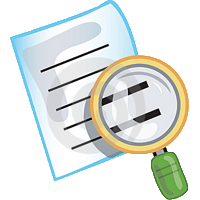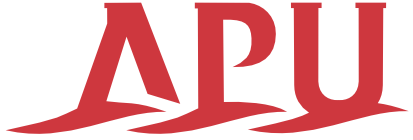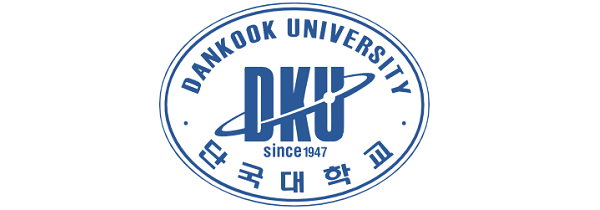Danh Mục Tài Liệu Số Ngành Ngôn Ngữ Anh
|
STT |
NHAN ĐỀ |
TÁC GIẢ |
NHÀ XB |
NĂM XB |
SỐ TRANG |
SỐ PHÂN LOẠI |
TOÀN VĂN |
|
1 |
Giáo trình dẫn luận Ngôn ngữ học |
Hoàng Dũng, Bùi Mạnh Hùng |
Đại học Sư phạm TP.HCM |
2007 |
183tr |
410 |
|
|
Tóm tắt: Đây là giáo trình nhằm trang bị cho người học những kiến thức nhập môn về Ngôn ngữ học. Với mục đích trình bày đầy đủ những nội dung cơ bản và hiện đại, giáo trình đã thay đổi một phần cấu trúc các chương mục, thay vì triển khai theo những nội dung phổ biến trong các giáo trình dẫn luận lâu nay tại Việt Nam là Những vấn đề chung, Ngữ âm học, Từ vựng học, Ngữ pháp học, cuốn sách này gồm các chương Những vấn đề chung về ngôn ngữ và Ngôn ngữ học, Ngữ âm học, Ngữ pháp học, Ngữ nghĩa học |
|||||||
|
2 |
Giáo trình Minna no Nihongo Shokyu I |
Mỹ Duyên (chủ biên), Ngô Mỹ Linh (biên dịch) |
Giao Thông Vận Tải |
2002 |
210tr |
495.684 | |
|
Tóm tắt: Gồm 25 bài đọc hiểu tiếng Nhật trình độ sơ cấp 1 với các mẫu câu, ví dụ, hội thoại, luyện tập, từ vựng phù hợp các ngữ cảnh trong mỗi bài, giúp người học củng cố kỹ năng đọc hiểu tiếng Nhật |
|||||||
|
3 |
Sejong 1 |
The National Institute of The Korean Language |
Hawoo |
2013 |
94tr |
495.78 |
|
|
Tóm tắt: Bộ giáo trình học Tiếng Hàn Sejong gồm 8 tập dạy đầy đủ theo 4 kỹ năng là Nghe, Nói, Đọc, Viết. Trong đó tập trung vào kĩ năng nghe và nói với các bài hội thoại theo mẫu. Sejong 1 Workbook nhằm mục đích giúp người học cải thiện kỹ năng giao tiếp bằng tiếng Hàn bằng cách thúc đẩy sự quan tâm của họ đến việc học tiếng Hàn dựa trên giao tiếp đa văn hóa. Vì vậy, nội dung của cuốn sách này phản ánh thực trạng xã hội hiện tại ở Hàn Quốc, đồng thời hình thức và thiết kế mới giới thiệu các phương pháp giảng dạy mới nhất. |
|||||||
|
4 |
Sejong 1 Workbook |
The National Institute of The Korean Language |
Hawoo |
2013 |
110tr |
495.78 |
|
|
Tóm tắt: Bộ giáo trình học Tiếng Hàn Sejong gồm 8 tập dạy đầy đủ theo 4 kỹ năng là Nghe, Nói, Đọc, Viết. Trong đó tập trung vào kĩ năng nghe và nói với các bài hội thoại theo mẫu. Sejong 1 Workbook nhằm mục đích giúp người học cải thiện kỹ năng giao tiếp bằng tiếng Hàn bằng cách thúc đẩy sự quan tâm của họ đến việc học tiếng Hàn dựa trên giao tiếp đa văn hóa. Vì vậy, nội dung của cuốn sách này phản ánh thực trạng xã hội hiện tại ở Hàn Quốc, đồng thời hình thức và thiết kế mới giới thiệu các phương pháp giảng dạy mới nhất. |
|||||||
|
5 |
Sejong 2 |
The National Institute of The Korean Language |
Hawoo |
2013 |
192tr |
495.78 |
|
|
Tóm tắt: Bộ giáo trình học Tiếng Hàn Sejong gồm 8 tập dạy đầy đủ theo 4 kỹ năng là Nghe, Nói, Đọc, Viết. Trong đó tập trung vào kĩ năng nghe và nói với các bài hội thoại theo mẫu. Sejong 1 Workbook nhằm mục đích giúp người học cải thiện kỹ năng giao tiếp bằng tiếng Hàn bằng cách thúc đẩy sự quan tâm của họ đến việc học tiếng Hàn dựa trên giao tiếp đa văn hóa. Vì vậy, nội dung của cuốn sách này phản ánh thực trạng xã hội hiện tại ở Hàn Quốc, đồng thời hình thức và thiết kế mới giới thiệu các phương pháp giảng dạy mới nhất. |
|||||||
|
6 |
Sejong 2 Workbook |
The National Institute of The Korean Language |
Hawoo |
2013 |
185tr |
495.78 |
|
|
Tóm tắt: Bộ giáo trình học Tiếng Hàn Sejong gồm 8 tập dạy đầy đủ theo 4 kỹ năng là Nghe, Nói, Đọc, Viết. Trong đó tập trung vào kĩ năng nghe và nói với các bài hội thoại theo mẫu. Sejong 1 Workbook nhằm mục đích giúp người học cải thiện kỹ năng giao tiếp bằng tiếng Hàn bằng cách thúc đẩy sự quan tâm của họ đến việc học tiếng Hàn dựa trên giao tiếp đa văn hóa. Vì vậy, nội dung của cuốn sách này phản ánh thực trạng xã hội hiện tại ở Hàn Quốc, đồng thời hình thức và thiết kế mới giới thiệu các phương pháp giảng dạy mới nhất. |
|||||||
|
7 |
Tiếng Hàn tổng hợp cho người Việt Nam – Sơ cấp 1 |
Cho Hang Rok, Lee Mi Hye, Lê Đăng Hoan |
Quỹ giao lưu quốc tế Hàn Quốc |
2019 |
378tr |
495.7800711 |
|
|
Tóm tắt: 2 cuốn sách trong bộ Sơ cấp được xây dựng với 30 bài khóa và bảng chữ cái. Trong đó quyển 1 gồm phần bảng chữ cái và 15 bài đầu. Học hết quyển 1, bạn sẽ học đến quyển sơ cấp 2 với 15 bài còn lại. Cấu trúc tổng thể của giáo trình được xây dựng theo các chủ đề; mỗi chủ đề được liên kết thống nhất với một hệ thống các từ vựng và cấu trúc ngữ pháp cơ bản, bài tập ứng dụng, kỹ năng và tìm hiểu văn hóa. Trong mỗi bài học, nội dung học được chia thành các phần như: luyện từ vựng, luyện ngữ pháp cơ bản, luyện tập kỹ năng nghe – nói – đọc – viết, luyện phát âm, tìm hiểu văn hóa của đất nước Hàn Quốc xinh đẹp. Thêm vào đó, kết thúc mỗi bài đều có thêm bảng từ mới xuất hiện trong bài học. Phần cuối của sách, các tác giả đưa ra hệ thống từ mới được sắp xếp theo thứ tự của bảng chữ cái. Đây là những từ không xuất hiện trong phần ngữ pháp, từ vựng cơ bản; nhưng lại xuất hiện nhiều ở phần luyện tập của từng bài. |
|||||||
|
8 |
Tiếng Hàn tổng hợp cho người Việt Nam – Sơ cấp 2 |
Cho Hang Rok, Lee Mi Hye, Lê Đăng Hoan |
Quỹ giao lưu quốc tế Hàn Quốc |
2019 |
362tr |
495.7800711 |
|
|
Tóm tắt: 2 cuốn sách trong bộ Sơ cấp được xây dựng với 30 bài khóa và bảng chữ cái. Trong đó quyển 1 gồm phần bảng chữ cái và 15 bài đầu. Học hết quyển 1, bạn sẽ học đến quyển sơ cấp 2 với 15 bài còn lại. Cấu trúc tổng thể của giáo trình được xây dựng theo các chủ đề; mỗi chủ đề được liên kết thống nhất với một hệ thống các từ vựng và cấu trúc ngữ pháp cơ bản, bài tập ứng dụng, kỹ năng và tìm hiểu văn hóa. Trong mỗi bài học, nội dung học được chia thành các phần như: luyện từ vựng, luyện ngữ pháp cơ bản, luyện tập kỹ năng nghe – nói – đọc – viết, luyện phát âm, tìm hiểu văn hóa của đất nước Hàn Quốc xinh đẹp. Thêm vào đó, kết thúc mỗi bài đều có thêm bảng từ mới xuất hiện trong bài học. Phần cuối của sách, các tác giả đưa ra hệ thống từ mới được sắp xếp theo thứ tự của bảng chữ cái. Đây là những từ không xuất hiện trong phần ngữ pháp, từ vựng cơ bản; nhưng lại xuất hiện nhiều ở phần luyện tập của từng bài. |
|||||||
|
9 |
Project management tools and techniques: A practical guide |
Deborah Sater Carstens, Gary L. Richardson |
CRC Press |
2019 |
104tr |
658.404 |
|
|
Tóm tắt: The topic of project management is truly an evolution of art seeking science. This activity involves balancing project objectives against the constraints of time, budget, and quality. Achieving this balance requires skill, experience, along with the use of many tools, and techniques which are the focus of this book. |
|||||||
|
10 |
A Project Manager’s Book of Tools and Techniques |
Cynthia Snyder Dionisio |
John Wiley & Sons |
2018 |
221tr |
658.404 |
|
|
Abstract:A Project Manager’s Book of Tools and Techniques is an invaluable resource for students and working professionals alike. Whether you’re preparing for the PMP exam or just looking to optimize your project management skills, this book provides detailed explanations for over 100 essential tools described in the Project Management Institute’s A Guide to the Project Management Body of Knowledge (PMBOK Guide) Sixth Edition. Going beyond theory and concept to real-world practice, these tools and techniques are the “how” of effective project management; from planning, to implementation, to oversight, and beyond, all phases of the project are represented here to help you more effectively apply critical PMBOK concepts. Comprehensive examples illustrate real-world implementation, and detailed discussion provides expert guidance for both new and experienced project management professionals. |
|||||||
|
11 |
SPSS Programming And Data Management 4th edition |
Raynald Levesque |
SPSS Inc. |
2007 |
540tr |
519.502 |
|
|
Abstract:An Intermediate Guide to SPSS Programming: Using Syntax for Data Management introduces the major tasks of data management and presents solutions using SPSS syntax. This book fills an important gap in the education of many students and researchers, whose coursework has left them unprepared for the data management issues that confront them when they begin to do independent research. It also serves as an introduction to SPSS programming. All the basic features of SPSS syntax are illustrated, as are many intermediate and advanced topics such as using vectors and loops, reading complex data files, and using the SPSS macro language. An Intermediate Guide to SPSS Programming will be a welcome addition to advanced undergraduate and graduate statistics courses across the social sciences, education, and health. Professional researchers, data managers, and statisticians will also find this an invaluable reference for SPSS and data management. |
|||||||
|
12 |
Mindset for IELTS Level 3 |
Archer, G., Passmore, L., Crosthwaite, P., Hutchison, S. |
Cambridge University Press |
2018 |
226tr |
428.24 |
|
|
Abstract:MINDSET, the multi-level course from the organisation that produces the IELTS test, develops students’ English skills and leaves them fully prepared for test day. MINDSET from Cambridge gets you inside the IELTS test with a unique blend of print and online content. Topic-based units cover each of the four skills in turn, making it easy to find what you want. This Teacher’s Book accompanies MINDSET Student’s Book Level 3, targeting Band 7.5. Designed to help teachers feel more confident in the classroom, it clearly guides you through the test, providing clear links between activities and the test, a glossary of IELTS terms, alternative exercises and extension activities. Audio content can be downloaded using the code printed on the inside front cover. |
|||||||
|
13 |
Exploring research 9th edition |
Salkind, N. J. |
Pearson Education |
2018
|
271tr |
300.72 |
|
|
Abstract:For courses in Experimental Methods and in Research Methods in Political Science and Sociology An informative and unintimidating look at the basics of research in the social and behavioural sciences Exploring Research makes research methods accessible for students – describing how to collect and analyse data, and providing thorough instruction on how to prepare and write a research proposal and manuscript.
|
|||||||
|
14 |
Educational research: Planning, conducting and evaluating quantitative and qualitative research (4th ed.) |
Creswell, J.W. |
Pearson |
2012 |
673tr |
370.72 |
|
|
Abstract:Educational Research: Planning, Conducting, and Evaluating Quantitative and Qualitative Research offers a truly balanced, inclusive, and integrated overview of the processes involved in educational research. This text first examines the general steps in the research process and then details the procedures for conducting specific types of quantitative, qualitative, and mixed methods studies. Direct guidance on reading research is offered throughout the text, and features provide opportunities for practice. |
|||||||
|
15 |
Doing your research project (6th ed.) |
Bell, J. |
The Open University Press |
2014 |
293tr |
370.72 |
|
|
Abstract:This new edition of Doing Your Research Project has been thoroughly updated and includes: Wider coverage of research ethics Clear guidelines on the differences between different types of research project New coverage of “Research diaries” New sources in further reading plus more information on internet research and the use of electronic resources Coverage of the latest information on plagiarism More examples to highlight key issues. This bestselling book is an essential resource to help establish good practice for beginner researchers embarking on undergraduate or postgraduate study, and for professionals in such fields as social science, education, and health. |
|||||||
|
16 |
Research Methods in Applied Linguistics |
Dornyei, Z. |
Oxford University Press |
2007 |
107tr |
428.0072 |
|
|
This is a very practical and accessible book that offers a comprehensive overview of research methodology in applied linguistics by describing the various stages of qualitative and quantitative investigations, from collecting the data to reporting the results. It also discusses ‘mixed methods research’, that is, the various combinations of qualitative and quantitative methodologies. |
|||||||
|
17 |
Research Methods in Education (8th ed.) |
Cohen, L., Manion, L. & Morrison, K |
Routledge |
2018 |
657tr |
370.72 |
|
|
Abstract:Its five main parts cover: the context of educational research; research design; methodologies for educational research; methods of data collection; and data analysis and reporting. It continues to be the go-to text for students, academics and researchers who are undertaking, understanding and using educational research, and has been translated into several languages. It offers plentiful and rich practical advice, underpinned by clear theoretical foundations, research evidence and up-to-date references, and it raises key issues and questions for researchers planning, conducting, reporting and evaluating research. |
|||||||
|
18 |
Educational Psychology A contemporary Approach |
Gary D. Borich , Tombari, Martin L. |
Addison Wesley Longman |
1997 |
129tr |
370.15 |
|
|
Abstract:Organized around the unique theme of “What teachers need to know,” Borich and Tombari present clearly organized units on Developmental Learning, Instruction and Classroom Management, Assessment, and Diverse Learners. Features include two new chapters on cognitive and constructivist strategies of teaching and learning, and over 40 ” Applying your Knowledge” boxes. |
|||||||
|
19 |
English for International Tourism: Intermediate (New Edition) |
Peter Strutt |
Pearson |
2016 |
128tr |
428.24 |
|
|
Abstract:English for International Tourism is a three-level series designed to meet the English-language needs of professionals working in the tourism industry and students of tourism in further education. The course includes authentic material taken from the world’s best-loved guidebooks, Dorling Kindersley’s Eyewitness Travel Guides which explore some of the world’s top tourist destinations. English for International Tourism Workbook without key offers a wide variety of practice and review exercices and covers all of the language areas studied in the unit. With audio CD including all the audio material of the workbook. |
|||||||
|
20 |
Teaching English to speakers of other languages: An introduction |
Nunan, D. |
Routledge |
2015 |
210tr |
428.0071 |
|
|
Abstract:In this fresh, straightforward introduction to teaching English to speakers of other languages he presents teaching techniques and procedures along with the underlying theory and principles. The content is presented through a lively variety of different textual genres including classroom vignettes showing language teaching in action, question and answer sessions, and opportunities to ‘eavesdrop’ on small group discussions among teachers and teachers in preparation. Readers get involved through engaging, interactive pedagogical features and opportunities for reflection and personal application. Each chapter follows the same format so that readers know what to expect as they work through the text. Key terms are defined in a Glossary at the end of the book. |
|||||||
|
21 |
A course in English language teaching |
Penny Ur |
Cambridge University Press |
2012 |
388tr |
428.24071 |
|
|
Abstract:This is a comprehensive introduction to English language teaching for teachers in a variety of educational settings, including compulsory education. This book provides a comprehensive introduction to English language teaching, and is suitable for teachers in a variety of educational settings, including compulsory education. It has been completely revised and updated to include essential new topics for the modern English language teacher, including English as an international language, Content and Language Integrated Learning (CLIL) and using digital materials. It is ideal for initial teacher training and as a reference guide for practising teachers. The book combines theory and practice, with each unit containing tasks that encourage reflection and discussion, plus action tasks such as classroom observation and practice. |
|||||||







































